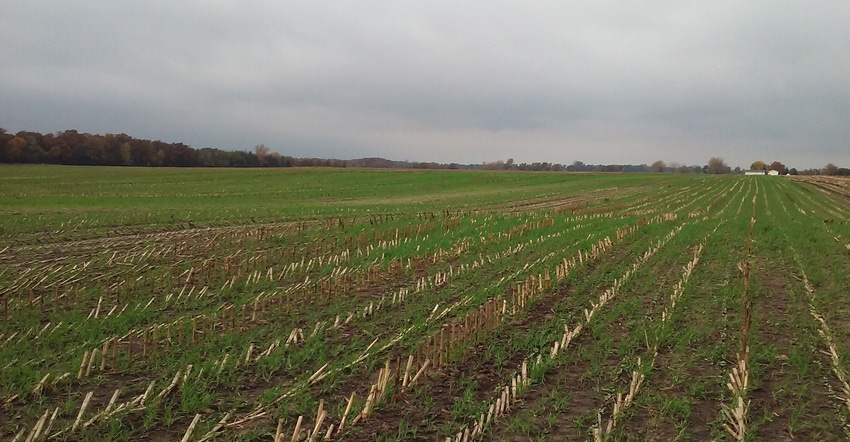March 19, 2021

More farmers in southwestern Wisconsin are witnessing the benefits of conservation practices on their farms. Through cost-share programs, cover crops and spreading the word, Lafayette Ag Stewardship Alliance continues to expand its commitment to environmental stewardship, its leaders says.
“I think LASA did well for itself despite the COVID-related disappointments of 2020,” says Jim Winn, LASA president and a dairy farmer. “Even though we couldn’t have any face-to-face field days or meetings, we picked up some new members and hosted a drive-by field day in September that featured four farms.”
Annual meeting
The farmer-led watershed conservation group’s annual meeting was held on Feb. 24. Winn and Steve Richter with The Nature Conservancy (TNC) shared updates on the group’s activities.
Membership increased by five farmers to 29 in 2020. Overall, the group represents 47,660 acres and 78,626 livestock. A cost-share program also expanded to an enrollment of 21 farms, and those in the program received an increase in dollars distributed.
“Our group is definitely improving and that’s always our goal,” Winn says.
TNC continued its support, providing $10,000 to LASA in 2020 for a cost-share cover crop trial program. The program maxed out with 10 applicants and included four non-members. Six of those 10 applicants tried cover crops for the first time.
“It’s great to see so much interest in this program among both members and non-members,” Richter, TNC’s director of agriculture strategies, says. “Incentives are important because it can be challenging and there is a certain amount of risk involved in trying something new.”
The group received the results of an analysis of farmers’ conservation practices from the prior year. It showed that members’ efforts to protect and improve water quality are significantly reducing the risk of phosphorus runoff and soil erosion.
Looking ahead, Winn said LASA will continue its partnership with the USDA Natural Resources Conservation Service; Wisconsin Department of Agriculture, Trade and Consumer Protection; the Southwest Wisconsin Groundwater and Geology study; and the University of Wisconsin-Platteville in a collaboration involving the Dairy Innovation Hub.
LASA is also in the process of analyzing 2020 results from its annual member conservation practices survey and is increasing its presence in the media and on social media to show the public what’s happening.
“LASA’s dedication and passion for conservation is inspiring,” Richter says. “The members work to document what they’re doing, and sharing with others shows the benefit of these farmer-to-farmer collaborations in getting tangible results in the field.”
During the coming year, Winn intends to further increase membership and community engagement, continue member surveys to track progress and host in-person educational events and field days. He also hopes to increase the number of participants in cost-share programs, possibly by adding another program.
“We have a few farmers talking about trying cover crops in the spring, which is something we’ve never done before,” Winn says. “We also hope to plan an event where we can invite people out to the field to see different types of manure applications.”
Source: Lafayette Ag Stewardship Alliance, which is responsible for the information provided and is wholly owned by the source. Informa Business Media and its subsidiaries aren’t responsible for any of the content contained in this information asset.
You May Also Like




